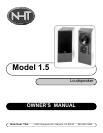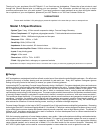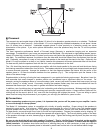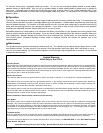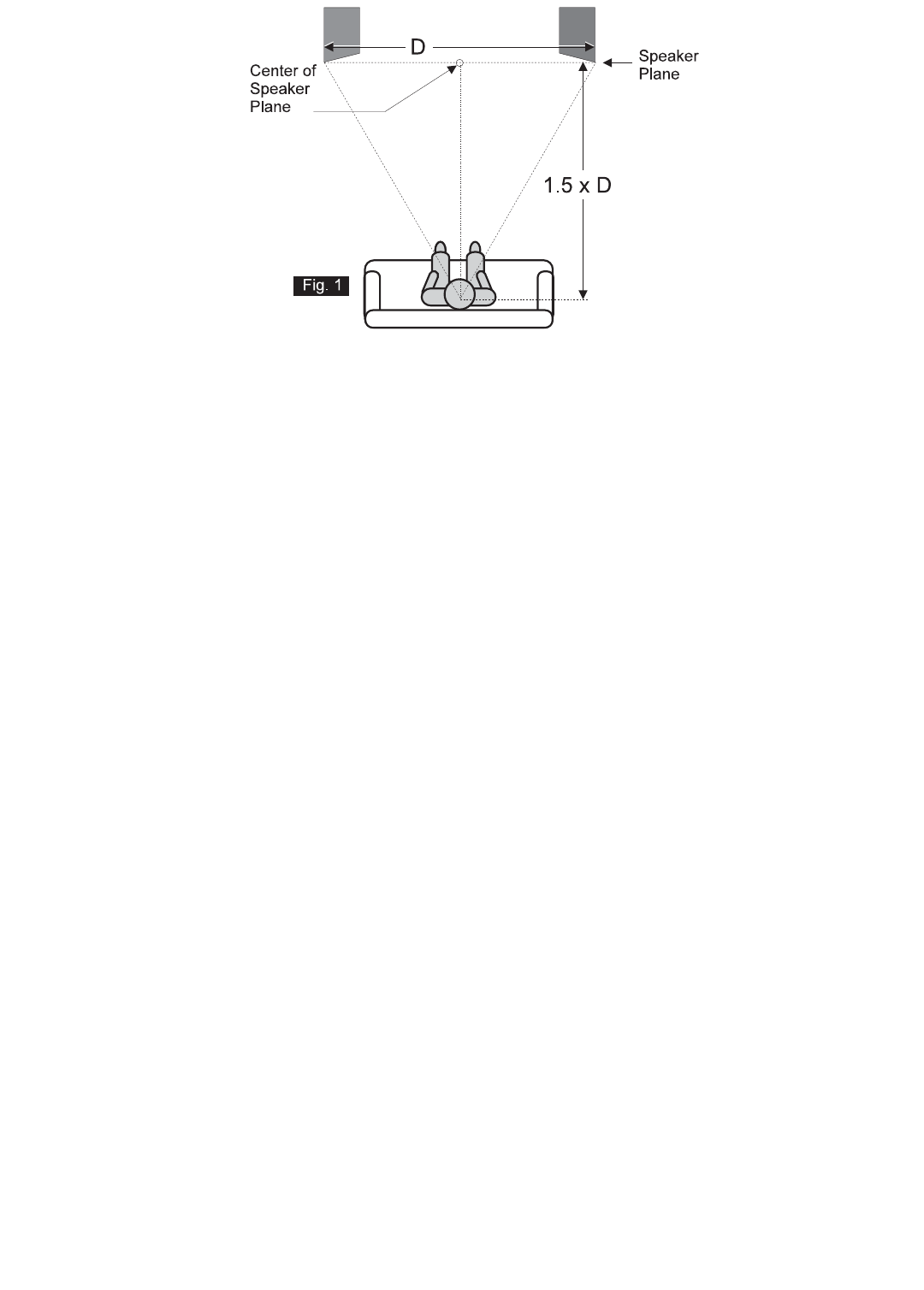
Placement
The compact size and angled shape of the Model 1.5 allow it to be placed on speaker stands or on shelves. The Model
1.5 is designed for indoor use only. As the Model 1.5 is not a magnetically shielded loudspeaker, do not place it closer
than 18 inches from a television. Unshielded magnets placed in close proximity to a television screen can cause
discoloration of the picture. If you notice picture discoloration, move the speakers away from the TV until the problem
disappears.
The most impressive performance benefit of Focused Image Geometry is spectacular imaging and an expansive
soundstage. To achieve this in your home, we recommend that the Model 1.5’s are placed on rigid speaker stands, approx-
imately 22 inches high, situated at least 12 inches from the rear wall (behind the speakers) and at least 30 inches from the
side walls. For smoothest response, the distance from the side walls should be different than the distance from the rear
wall. Preferably, use spikes or cones to firmly couple the speaker to the stand and the stand to the floor. Optionally, the
Model 1.5’s may be placed on a shelf or in a cabinet, however this placement will have a detrimental effect on the sound.
For best results, place the speakers flush with the front, and not pushed back on the shelf.
The 1.5’s should be placed as symmetrically as possible, with their backs parallel to the rear wall and the drivers facing
the listening area without obstruction from furniture. The tweeters should be at equal height and at approximately ear level
to ensure accurate response. Arrange the speakers so that the distance between the listener and the center of the
speaker plane is 1.5 times the distance between the two speakers (Fig.1). This configuration puts the listener in the
center of the stereo image.
Experimentation is the key to finding the best arrangement in your particular listening environment. Be patient, have fun,
and remember that small changes in speaker position can sometimes have a significant effect on the sound. For
example, moving the speakers nearer to a room boundary (walls, corners) will tend to increase their bass output, but may
result in “boomy” or “muddy” sound. Conversely, situating the speakers farther away from room boundaries will tend to
decrease their bass output, but may result in greater articulation and better imaging.
In addition, room furnishings play an important role in absorbing and reflecting soundwaves. Midrange and high frequen-
cies in particular will be absorbed by soft furnishings such as sofas, carpets and curtains. A large number of these soft fur-
nishings will dull the sound, while a “live” room with few furnishings will brighten the sound. If you are willing to spend
some time fine-tuning the performance of your system, you will enjoy the benefits for years to come.
Connections
Before connecting speakers to your system, it is important that you turn off the power to your amplifier / receiv-
er to avoid damage to the equipment.
The Model 1.5 loudspeaker system is compatible with virtually all quality amplifiers. Proper wiring of the speakers is
essential to good sound. At a minimum, 16AWG wire is recommended for runs of 10 feet or less, with heavier special
purpose speaker wire used for longer runs. For specialty wire considerations, consult your local authorized NHT retailer.
For best results, use equal length runs of wire for the left and right speakers. Prepare your speaker wire by stripping 1/4”
to 3/8” of insulation from the ends and twisting the exposed wire strands tightly. The five-way binding posts on the back
of the speaker will accept raw wire, banana plugs or spade plugs. Tighten the binding posts by hand, as pliers can strip
or break them.
Be sure to wire both the left and right speakers "in-phase." That is, the Positive (red) terminal on the amplifier
output must be connected to the corresponding Positive (red) terminal on the speaker. Likewise with the Negative
(black) terminals. All speaker wires have some sort of marking along one or both conductors to help you make the
correct connections. Incorrect speaker phase is indicated by weak bass and the lack of a well-defined stereo image.
3



